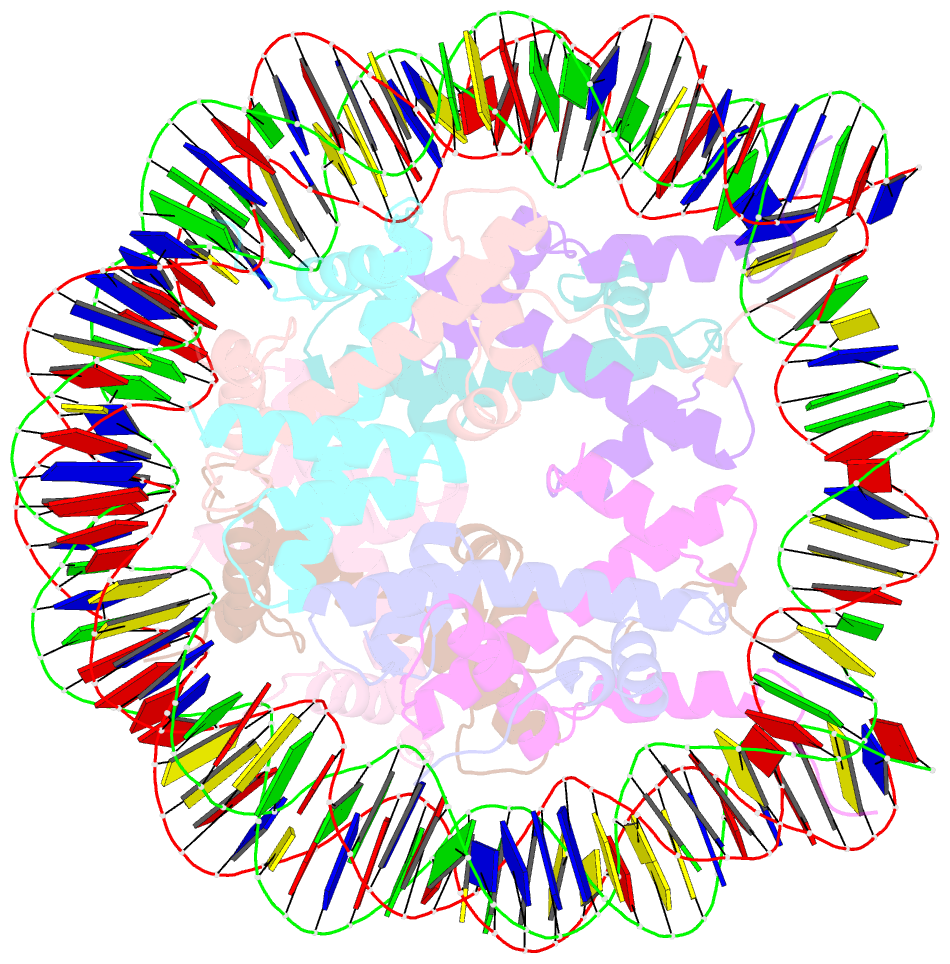Summary information and primary citation
- PDB-id
- 5omx; SNAP-derived features in text and JSON formats;
DNAproDB
- Class
- DNA binding protein
- Method
- X-ray (2.32 Å)
- Summary
- X-ray structure of the h2a-n38c nucleosome core particle
- Reference
- Frouws TD, Barth PD, Richmond TJ (2018): "Site-Specific Disulfide Crosslinked Nucleosomes with Enhanced Stability." J. Mol. Biol., 430, 45-57. doi: 10.1016/j.jmb.2017.10.029.
- Abstract
- We engineered nucleosome core particles (NCPs) with two site-specific cysteine crosslinks that increase the stability of the particle. The first disulfide was introduced between the two copies of H2A via an H2A-N38C point mutation, effectively crosslinking the two H2A/H2B heterodimers together to stabilize the histone octamer against H2A/H2B dimer dissociation. The second crosslink was engineered between an R40C point mutation on the N-terminal tail of H3 and the NCP DNA ends by the introduction of a convertible nucleotide. This crosslink maintains the nucleosome DNA in a fixed translational setting relative to the histone octamer and prevents dilution-driven dissociation. The X-ray crystal structures of NCPs containing the disulfides in isolation and in combination were determined. Both disulfides stabilize the structure of the NCP without disturbing the overall structure. Nucleosomes containing these modifications will be advantageous for biochemical and structural studies as a consequence of their greater resistance to dissociation during high dilution in purification, elevated salt for crystallization and vitrification for cryogenic electron microscopy.





